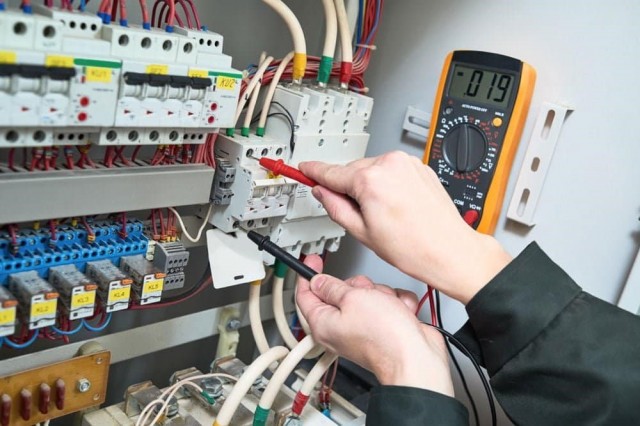Part 3: Production, Startup, Commissioning, and Maintenance of Control Panel by a Control System Integrator - Testing, Start-up, Commissioning, and Maintenance
This is part three of Production, Startup, Commissioning and Maintenance of Control Panel by a Control System Integrator. If you have not read parts one or two you can visit them below;
- Part 1 - Control Panel Layout and Mounting of Electronic Components
- Part 2 - Wiring and Grounding Requirements
I/O and Communication Testing
The I/O testing is a process where using a PC connected to the PLC the status of each point being tested is viewed and outputs are simulated by physically applying a signal to inputs and monitoring outputs with the use of an indicator on discrete outputs and a meter on analog outputs. The I/O checkout assures that point-to-point wiring between I/O module terminals and the field wiring terminal has been done correctly. To start I/O testing a list is created from the I/O list used for designing PLC or HMI applications. Each I/O point is included on the list with details of what criteria is being tested. The communication between devices connected by Ethernet and/or fiber is also checked during this testing.
Automated Control System Startup and Commissioning
Startup and commissioning of the automated control system will occur in stages. The startup of an automated control system begins once supplied control system enclosure is installed, field wiring is terminated, and testing for each individual system is completed. As each component is brought online for automated control in stages, the automation system is used for a remote startup of equipment as this is how operators will operate the system on daily basis. To start, it is best to isolate the various sections of control system power wiring by removing the fuses and/or opening circuit breakers. The startup consists of process fluids/chemicals being introduced for the first time. As each component of the system is started, the process is fully verified using the automated control system. For a control system integrator, the best tool to use during commissioning is the schematic diagrams which should be followed by starting at the incoming power and working through the entire schematic. This confirms that the plant process is functioning correctly, and verifies that the automation system can successfully control and operate the plant processes. The automation system contains the logic for automatic control of the plant process, so all operation scenarios will need to be tested to confirm the correct response of the system. Fault scenarios are introduced and tested to confirm the automation system reacts appropriately. The plant processes will be fine-tuned by adjusting settings and optimizing within the automation system.
Following the startup, a performance verification period will get initiated in which the system is monitored for a period of time in which there should be no interruption. This verification period maybe for days or maybe up to a month. If any operation gets interrupted during this period, the issue will be required to be resolved in a set amount of time and the period will restart until the duration of the uninterrupted operation is achieved. Once the desired performance verification period is completed successfully, the system can be passed on to the end-user.
Maintenance of Automated Control System
It is often found that end users neglect preventive maintenance which results in premature failure of control components. As control system integrators, discussing maintenance early and often during the design phase with end-user is important to ensure that maintenance is kept at the forefront. Developing a routine maintenance schedule for supplied automated control system and passing it on to the end-user helps the control system integrator to reduced warranty claims on the supplied equipment. Having a routine schedule for checking critical components and devices in the system will increase the longevity of the system, and more importantly, it will help eliminate future problems.
References
- National Electrical Code (NEC): https://www.neca-neis.org/safety-and-the-nec/safety/the-nec
- Underwriters Laboratories (UL):http://industries.ul.com/industrial-systems-and-components
Next week, we will post the complete comprehensive guide with all three parts of this article combined into one guide.
Related Posts
By accepting you will be accessing a service provided by a third-party external to https://blti.com/

